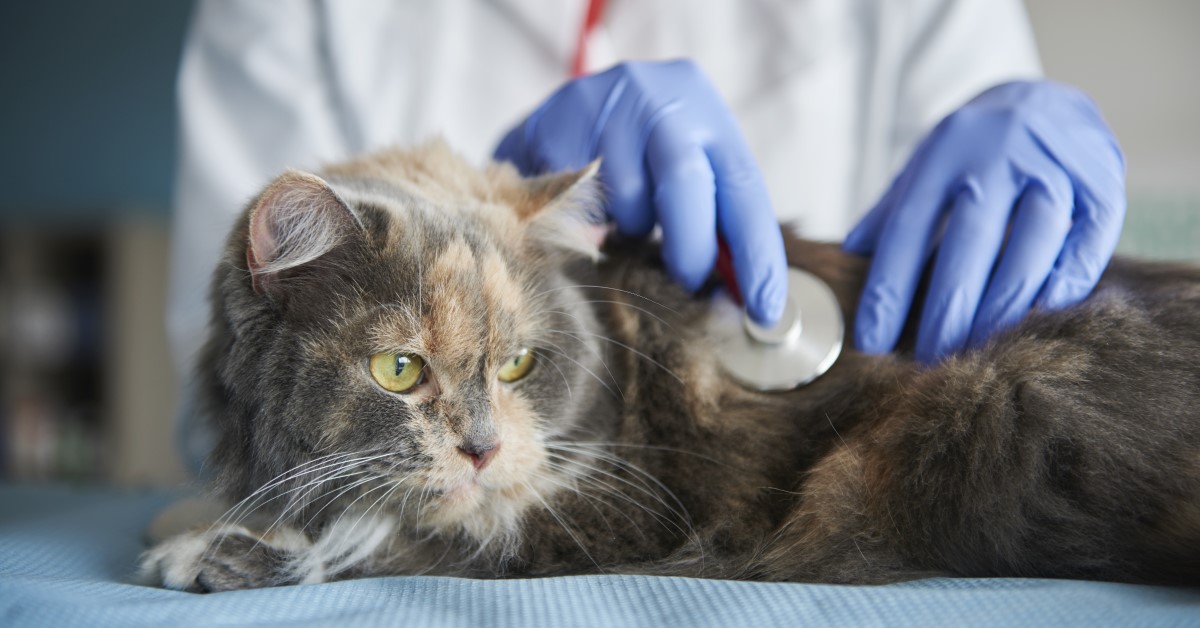Urinary Tract Infections in Cats
Cats are susceptible to urinary disorders such as urinary tract infections, feline lower urinary tract disease (FLUTD), and others.

While urinary tract infections (UTIs) are fairly common in dogs, cats are much more likely to develop urinary tract disease. According to the Purina Institute, approximately 1 to 2 percent of cats develop UTIs in their lifetime, while 2 and 19 percent develop signs of lower urinary tract disease. Understanding what causes urinary disorders in cats, the symptoms of a urinary tract infection, and how to treat and prevent these conditions is key to helping your pet live a happy, healthy life.
Common Symptoms of Urinary Disorders in Cats
If your cat develops a urinary disorder, it may exhibit one or more of the following symptoms:
- Loss of bladder control
- Drinking more water than usual
- Cloudy or bloody urine
- Vomiting
- Urinating in small amounts
- Lethargy
- Strong ammonia odor in urine
- Inability to urinate
- Excessive licking of the genital area
- Fear or avoidance of the litter box
- Distended or hard abdomen
- Urinating more often than usual
Causes of Feline Urinary Disorders
There is no single cause of feline urinary disorders. If your cat is exhibiting signs of urinary problems, your veterinarian may consider a variety of possible causes, such as the following:
1. Urinary Tract Infection (UTI) in Cats
Also known as bacterial cystitis, UTIs occur when bacteria enter the urinary tract. UTIs cause inflammation in parts or all of the urinary tract, such as the bladder, urethra, and kidneys.
When a UTI develops, there will usually be evidence of blood in the urine. Frequently licking the genital area and urinating outside of the litter box are also common signs of UTIs. Female cats are more likely to develop UTIs due to their smaller urethras. This condition is also more common in older cats.
To determine if a cat has a UTI, your vet will perform a urinalysis that reveals important information about the urine, such as the pH level and the amount of blood, protein, and sugar in the urine.
2. Bladder and Kidney Stones in Cats
Bladder and kidney stones can form in cats, causing symptoms like blood in the urine and straining to urinate. These rock-like formations of minerals can vary in size and could be a single stone or multiple stones. Urinary stones can develop in just a few weeks or can take many months. The rate of growth is dependent on several factors, such as the amount of crystalline material in the urine, the cat’s diet, and the urine’s pH level.
As the symptoms of bladder and kidney stones in cats often mimic UTIs, vets do not generally diagnose urinary stones based on clinical symptoms alone. Larger stones may be felt with the fingers through the abdominal wall. Radiographs or ultrasounds are commonly used to identify urinary stones in cats that have ongoing urinary problems.
3. Urethral Obstruction
A urethral obstruction (UO) is a type of life-threatening blockage of the lower urinary tract. When a cat develops a UO, it often becomes unable to urinate, resulting in pain and discomfort. This condition is most common in middle-aged male cats but can affect cats of both sexes and all ages.
There are several known causes of urethral obstruction in cats, including physical obstructions like urinary stones, urethral plugs, tumors, and strictures. In some instances, mechanical blockages can also develop due to urethral spasms or swelling in the lower urinary tract.
4. Feline Idiopathic Cystitis
Feline idiopathic cystitis (FIC) is a term that describes the inflammation of the bladder. The condition causes symptoms that mimic a urinary tract infection, but the cause is not the same. While UTIs are caused by bacteria, FIC is a sterile disease in which no bacteria are present. However, this does not mean that FIC is harmless. If excessive swelling occurs, it can cause an obstruction in the urinary tract.
No one knows the exact cause of FIC in cats. However, it is most common in young- to middle-aged felines, as well as cats that are overweight. To diagnose this condition, the vet must first rule out other conditions like bladder stones, UTIs, and urethral obstruction.
5. Feline Lower Urinary Tract Disease
Feline lower urinary tract disease (FLUTD) is an umbrella term that describes a group of conditions associated with the lower urinary tract. The common causes of FLUTD include urinary stones, urinary tract infections, urethral obstructions, and feline idiopathic cystitis. Less commonly, FLUTD can be caused by an injury, anatomical abnormality, or tumor in the urinary tract.
Treatments for Urinary Tract Infections in Cats
Treatment for urinary disorders in cats is dependent on the cause of the condition and its severity. Mild urinary symptoms that are not caused by infection or disease may be resolved by increasing your pet’s water intake or through changes in diet.
Infections of the urinary tract will generally require antibiotics or another medication. For urethral blockages or other serious conditions of the urinary tract, surgery may be required to remove the obstructions or fix abnormalities.
What to Do If Your Cat Shows Symptoms of a Urinary Tract Infection
While not all urinary disorders are considered emergencies, they should be looked at by a veterinarian for a proper diagnosis. If your cat is exhibiting symptoms of a urinary problem, contact your vet and ask for guidance on how to proceed. Your vet will likely perform a physical exam and may recommend tests to rule out other conditions. Prompt treatment is critical to prevent permanent damage to your cat’s urinary system.
Ready to start saving money on pet wellness care?
Then take a look at Mint Wellness, the pet wellness plan that provides fast reimbursement on routine pet care. Save on vaccinations, wellness exams, preventatives, dental, and more!
Learn More


